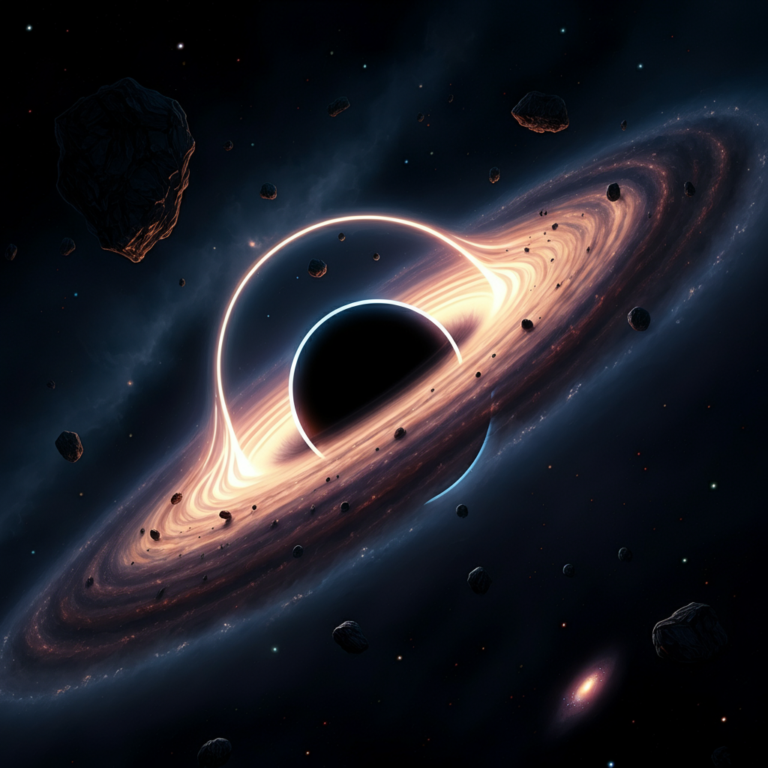Black holes are among the most fascinating and mysterious objects in the universe. These cosmic phenomena captivate scientists and non-scientists alike, often challenging everything we know—and don’t know—about physics and the workings of the cosmos. While decades of astrophysical research have helped shed light on black holes, much about them remains shrouded in mystery.
This blog unpacks the science of black holes, explaining what they are, how they form, what we’ve discovered so far, and the questions that remain unanswered. Whether you’re a seasoned science enthusiast or simply curious about the universe, this guide will make the complex topic of black holes both digestible and engaging.
What Are Black Holes?
At their simplest, black holes are regions in space where the gravitational pull is so strong that nothing—not even light—can escape. Unlike stars or planets, black holes don’t have a physical surface. Instead, they are defined by an invisible boundary known as the event horizon, beyond which nothing can return.
Black holes form when massive stars collapse in on themselves after running out of fuel for nuclear fusion. This collapse compresses matter into an incredibly dense point called a singularity—a single point in space where gravity becomes infinite, and the laws of physics as we know them break down.
The Types of Black Holes
Scientists have categorized black holes into three main types based on their size:
- Stellar Black Holes
These are the most common type of black hole, formed when a star with a mass greater than the Sun collapses. Stellar black holes typically range from 3 to 10 times the mass of the Sun.
- Supermassive Black Holes
Located at the centers of galaxies, these behemoths can have masses equivalent to millions or even billions of Suns. Scientists believe supermassive black holes play a critical role in galaxy formation and evolution.
- Intermediate Black Holes
Intermediate black holes are a theoretical “middle ground” between stellar and supermassive black holes. While evidence for their existence is scarce, researchers suggest that they may form from the merging of smaller black holes or the collapse of massive star clusters.
- Primordial Black Holes
Hypothetical black holes that may have formed shortly after the Big Bang. These remain speculative but are topics of active investigation as they could offer insights into the early universe.
What We Know About Black Holes
The study of black holes has seen remarkable progress, especially in recent decades. Here are a few key truths science has uncovered:
1. Black Holes Warp Space and Time
Einstein’s General Theory of Relativity predicted that massive objects warp spacetime, and black holes exemplify this concept. Their immense gravity creates a “dent” in spacetime, making them perfect laboratories for testing Einstein’s theories. Observations of black hole behavior have repeatedly confirmed these predictions.
2. Light Can’t Escape, But We Can See Them
Despite their name, black holes aren’t completely invisible. Scientists detect their presence through their impact on nearby stars and gas. For instance, when matter spirals into a black hole, it accelerates and heats up, emitting X-rays that we can observe with telescopes.
An iconic achievement in this field was the first-ever image of a black hole in 2019, captured by the Event Horizon Telescope. The image famously showed a glowing “halo” of gas and dust surrounding the event horizon.
3. They Generate Enormous Energy
When matter is pulled into a black hole, it doesn’t vanish immediately. Instead, the process of accretion releases incredible amounts of energy. This phenomenon is why black holes are often found at the centers of quasars, some of the most luminous objects in the universe.
4. Black Holes Merge to Form Larger Black Holes
When two black holes merge, they create ripples in spacetime known as gravitational waves. Detected for the first time in 2015 by the LIGO observatory, these waves offer a groundbreaking way to study black holes and other cosmic events.
What We Don’t Know About Black Holes
Despite significant advances, black holes remain an enigma. Here are just a few of the unanswered questions that continue to puzzle scientists:
1. What Happens Inside a Black Hole?
The singularity at the center of a black hole defies our understanding of physics. The equations of General Relativity predict an infinite density and zero volume, a paradox that suggests the need for a new theory of quantum gravity. Understanding the singularity is one of the most profound challenges in modern physics.
2. What Happens at the Event Horizon?
The “information paradox” presents another deep mystery. According to quantum mechanics, information about the physical state of a system cannot be destroyed. But when matter crosses the event horizon, it seemingly disappears forever. How—and whether—this information is preserved is still hotly debated.
3. How Do Supermassive Black Holes Form?
While stellar black holes form from collapsing stars, the origins of supermassive black holes are far less clear. Did they grow gradually by accumulating matter, or did they form directly as massive objects in the early universe? Understanding their formation may hold clues about the evolution of galaxies.
4. Are Wormholes or Time Travel Possible?
Theoretical models suggest that black holes might connect to other areas of spacetime, creating “wormholes.” While this concept is popular in science fiction, no evidence for such structures has been found.
5. Do Primordial Black Holes Exist?
If confirmed, primordial black holes could answer questions about dark matter, a mysterious substance that makes up roughly 27% of the universe. However, their existence remains speculative.
Why Black Holes Matter to Science
Why do physicists and astronomers dedicate so much effort to studying black holes? Because they offer unparalleled opportunities to test and expand our understanding of fundamental physics. From gravitational waves to quantum mechanics, black holes push the boundaries of what we know and pave the way for future discoveries.
Beyond science, black holes inspire awe and wonder, reminding us of the universe’s vastness and our ongoing quest to understand it.
Takeaways for Aspiring Science Enthusiasts
If you’re interested in learning more about black holes, here are a few actionable steps to deepen your knowledge:
- Explore Visualizations
Tools like NASA’s black hole simulations offer stunning ways to visualize how these objects distort light and spacetime.
- Read Accessible Literature
Stephen Hawking’s A Brief History of Time and Kip Thorne’s Black Holes and Time Warps are excellent starting points for curious minds.
- Keep Up with Research
Follow organizations like NASA, ESA, and university astrophysics departments for the latest discoveries.
- Experiment with Citizen Science
Projects like Zooniverse often invite the public to assist in analyzing astronomical data.





















0 Comments